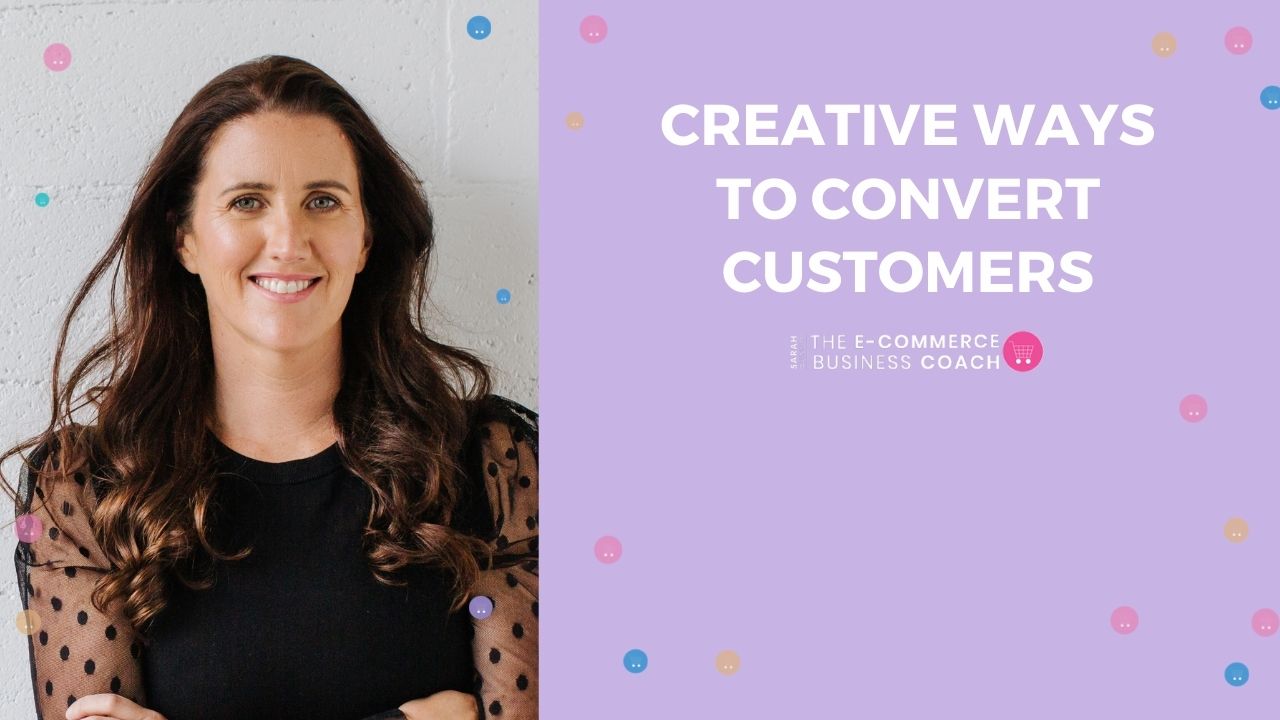
Creative Ways to Convert Customers
To convert leads, you need to know your customers inside and out. You must know what they like, and what grabs their attention. It’s important to clearly define their pain points, frustrations, and needs. You also need to know their goals, and what they’re trying to achieve.
You can have all of the witty, attention-grabbing content in the world, but it will be nothing if it’s not what your audience wants to see.
There are a lot of ways to give your audience what they want, and even more ways to do so creatively. Consider these creative ways to convert leads by sparking interest and ultimately making sales.
Use humor
A tried-and-true method for effectively speaking to your audience is through using humor. Despite current trends pushing toward simplistic, minimalist, to-the-point design and writing styles, clever copy can still be a great way to increase conversion. Studies show that that conversion increase could be by as much as 28%.
A huge reason that humor sells is because… it doesn’t. When people read something funny, it triggers an emotional response that distracts them from the fact that they’re being sold to. It turns out, people love this!
To try it out, follow these guidelines:
Speak to your audience
To implement humor into your site copy, ads, or anywhere else, speak to your audience. Make fun of their pain points. Show relatability. Speak to them. You could do so through copy, imagery, or even videos. Incorporate trending topics or other content that will be understandable and relatable to your audience.
Start small
If you’re afraid to use humor, start small. Refrain from totally giving your website copy a risky overhaul, and instead start with something like a Facebook ad. Use A/B testing practices to figure out what best resonates with your audience. Once you have a clear picture, you can decide how to further implement humor into your brand personality.
Go all in
Once you know how to use humor with your audience, go all in. Don’t give half effort; humor requires an all-or-nothing mentality. If you’re only using it here or there, or whenever you feel like, you’ll confuse your audience.
Your brand voice needs to be consistent. Don’t be afraid to let your brand personality shine!
Don’t try too hard
Keep it natural. When brands try too hard to be funny, clever, and relatable, it’s incredibly transparent. Let everything flow naturally, and you’ll be good to go. Once you find the style of humor that best resonates with your audience, stick with it.
Studies show that when done well, humor can be a huge driving factor for lead conversion. This is especially true with younger generations, as they have no interest in monotonous marketing jargon. They want wit and relatability. I mean, think about it: would you rather be seen as a stale, stuffy company, or as a charismatic, lively one?
Play on your audiences’ emotions
We all know that emotions sell. They control our actions, and that includes everything from the really big life decisions all the way down to what we’re having for breakfast. Knowing that, it makes sense that marketers can use this to sell their products.
There are six main emotions that plague buyers: greed, fear, altruism, envy, pride, and shame.
Which one works best? It all comes back to your audience and their pain points. Once you’ve located that driving factor, play on it.
For example, if your audience is motivated by fear, show them why they need your product or service. Talk about what will happen if they don’t have it, and emphasize how it will make their lives so much better.
If altruism is more their thing, talk about how your product or service will better the lives of others. Maybe with your product, your audience will be better equipped to do the helping themselves. Highlight that.
Whatever that driving motivator is for your audience, make that a focus during your sales process to convert leads.
Use clear CTAs
This one isn’t necessarily high on the creativity totem pole, but it’s incredibly important and something that frequently gets overlooked.
You must use clear, actionable CTAs (calls to action) to convert leads. After grabbing readers’ attention, you’ve got to tell them what to do next. Are you trying to prompt them to sign up for your course? Buy a product? Download something? Tell them what their goal should be with your CTA.
To prompt leads to download a freebie, the text could say “Download My Freebie NOW.”
If you want them to sign up for your mailing list, label your CTA something like “Snag a Spot on The Mailing List.”
If you don’t tell them, they won’t know. And even if they do know, your little nudge could be the difference between a conversion and simply clicking out of the page.
Don’t leave them questioning what needs to be done next; truly show them. Make your CTAs clear and to the point using direct, 1st person text that clearly outlines what they should do. Make your takeaway as actionable as possible.
CTAs are how you get through to your audience, so use them wisely.
Create a sense of anticipation
Have you ever purchased tickets to a concert, sporting game, or other event? How did you feel leading up to the actual event? Most likely, you felt excited for many days prior! Your special event provided happiness much longer than in just the hours of the event.
Creating a sense of anticipation is a great way to convert leads. Anticipation releases endorphins and provides a feeling of happiness and excitement. This extends the life of the event or product release and makes it feel all the more special.
This works with E-Commerce!
Before you launch new products or run special sales, build up anticipation! Make shoppers aware of your forthcoming launch by plastering information all over your website.
Have an email list? Now is the perfect time to use it. Send out a newsletter alerting your customers to what’s to come. Drum up some excitement and be sure that you clearly state when this product or event will launch. Leave them counting down the minutes!
Using anticipation is a great way to convert leads.
Tell a story with your content
Lastly, people love stories.
More importantly, they love being sold to through stories (though most wouldn’t admit that themselves). To effectively sell, your story needs three things.
It needs a subject, which is typically a person or customer. Next, that person needs a pain point. They need to have some sort of problem that requires solving. Lastly, they must undergo a transformation. It must be clear how this person’s life was changed or improved for the better as a result of using your product or service.
Does this sort of sound like a testimonial to you? It so, that’s because testimonials often make great story pieces. If you have these three things, you’ll have an effective sales story.
Clearly show your leads the difference between where they are now (without your product), and where they could be in the future (once they have your product). By placing an emphasis on this, your lead will have strong feelings regarding their need for your product. When done right, stories sell.
How will you implement these creative ways to convert leads? Let me know, and good luck!
Sarah
Ready to scale your online store? There are two ways to work with Sarah…
1. The E-Commerce Women In Business Mastermind – your exclusive e-commerce coaching and e-commerce digital marketing mentorship for women looking to Grow and Scale your online store. Click here to learn more
2. The E-Commerce VIP Leaders Mastermind is for e-commerce businesses owners that are already achieving 50k months consistently, they are ready to breakthrough to million+ years. Click here to learn more
Yours in success,
Sarah x

